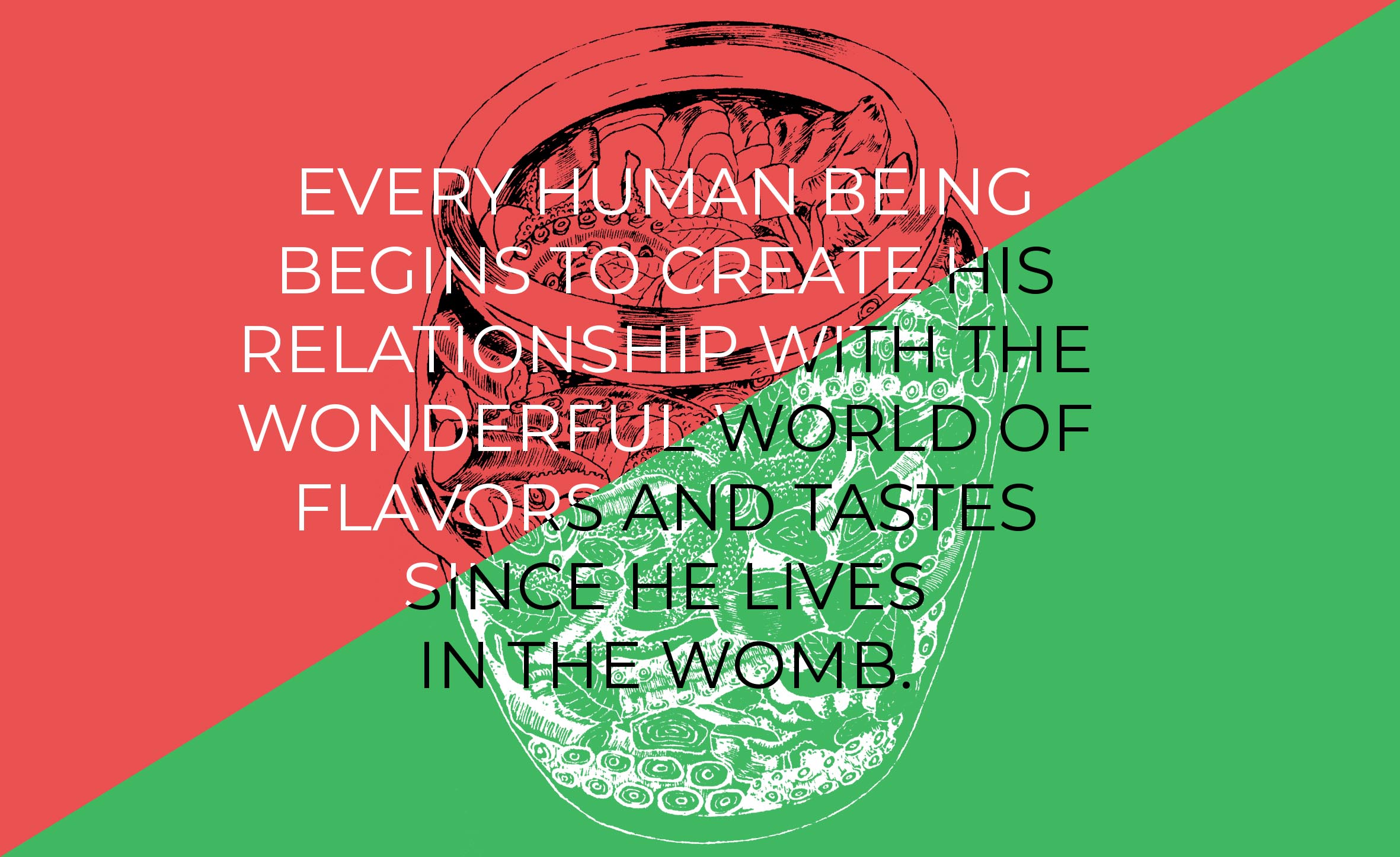From the embryo to the development of taste
By Dr Nicoletta Arbusti, Psychologist, Psychotherapist, on DICHECIBO6? NumeroZero issue.
All the senses form in the embryonic period, from the first to the eighth week of gestation, and at the beginning of the foetal period, to mature afterwards at different times.
The development and flourishing of the sense organs are closely linked to the organs of the central nervous system.
In particular, the taste forms and matures at a very early stage. The first papillae appear at about eight weeks of gestation.
The aromatic compounds contained in the amniotic fluid stimulate the taste receptors as soon as the foetus begins to swallow, around the twelfth week of gestation [1].
The composition of the amniotic fluid changes during the foetal growth, especially when the foetus starts to urinate. The foetus swallows about 200-760 ml of amniotic fluid a day, depending on the stage of development, and therefore is exposed to a large number of different flavours, including sugars (e.g. glucose, fructose), fatty acids, amino acids, proteins and salts. The flavours of the maternal diet reach the amniotic fluid. In this way, children can experience different flavours even before they come into direct contact with them. [2] Between the 26th and 28th week of gestation, we can find a connection between the stimulation of taste receptors and changes in facial expression. This occurs especially for bitter flavours. At the 32nd week of gestation, the foetus reacts to changes in the taste of the amniotic fluid by modifying its swallowing. The foetus regulates the frequency of swallowing by respectively increasing or decreasing it based on the sweet or bitter taste of the amniotic fluid. In infants, the taste is the most important and most developed of all the senses. Several experiments carried out with newborns show a high approval rating for the sweet taste. In contrast, they repel the citric acid BITTER flavour with tight lips. We observe no reactions to solutions diluted with a BITTER or SAVOURY taste. However, in high concentration, foetuses reject bitter flavours. We observe a change towards the BITTER flavour around 140-180 days. From the evolutionary point of view, we can describe the clear preference for sweetness, “a safe taste”, by the fact that the sweet taste symbolises a source of energy, carbohydrates, which are not harmful but safe to eat. Instead, the bitter taste reminds us of toxic or poisonous foods. The taste of breast milk can also influence subsequent preferences of newborns. American researchers, for example, have demonstrated that newborns, whose mothers had drunk carrot juice during pregnancy and weaning, prefer more carrot-flavoured cereals in their childhood than the control group children whose mothers had not consumed any carrot juice. Innate reactions to TASTE3
|
Basic tastes |
Instinctive reaction |
Taste development |
|
Sweet |
positive |
prenatal |
|
Acid |
negative/refusal, uncertain |
prenatal |
|
Salty |
positive |
at 4-6 months of age/p> |
|
Bitter |
negative/refusal |
prenatal |
|
Umami |
uncertain |
Unknown |
[1] Menella JA, Beauchamp GK. The Early Development of Human Flavor Preferences. In: Capaldi ED.: Why we eat what we eat. The psychology of eating. American Psychological Association, 1996 [2] Mennella JA et Al., Prenatal and Postnatal Flavor Learning by Human Infants. Pediatrics 107:88-93, 2001 [3] Mela DJ.Development and Acquisition of Food Likes, in: Frewer LJ et Al.: Food, People and Society, A European Perspective of Consumer’s Food Choices. Berlin/Heidelberg/New York, 2001


